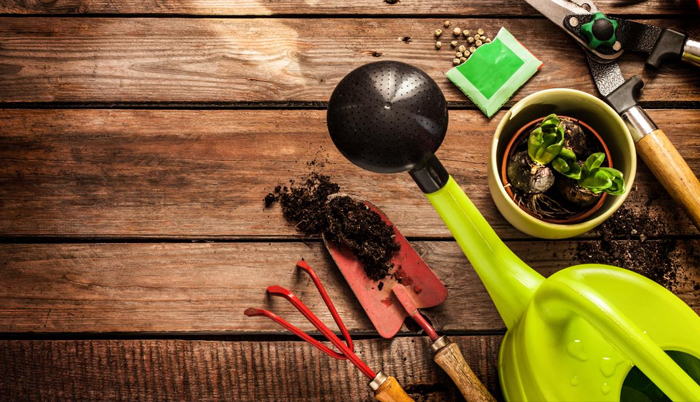![]() Home > Lifestyle
Home > Lifestyle
Medicinal Plants: 15 Must-Have Herbs In Your Survival Garden

![]() September 11th, 2020 | 15:50 PM |
September 11th, 2020 | 15:50 PM | ![]() 595 views
595 views
NATURALNEWS
When SHTF, medicinal plants and herbs on hand become indispensable. But instead of foraging for them in the wild when disaster strikes, it’s better to grow them in an outdoor or indoor garden for a more sufficient and stable source of herbal remedies.
Potent medicinal herbs to have in your survival garden
Here are some of the most potent natural products and homeopathic substances essential for SHTF situations. Read on to learn more about their medicinal uses, as well as some tips for growing them.
Calendula – The edible flowers of this plant can be used as a base ingredient in homemade ointments and creams for treating inflamed or irritated skin. Consuming the flowers can also help ease stomach ache and acid reflux. In an herb garden, calendula attracts bees, which will then pollinate other medicinal flowering plants.
Black cohosh – Traditional Cherokees used black cohosh, a medicinal root, to help ease pain due to difficult menstruation, menopause and childbirth. You can start the plant from cuttings or seeds sown into the ground.
Cinnamon – This aromatic spice is a potent immune-boosting food for both humans and animals like cattle and hens. In traditional medicine, cinnamon is hailed for its antimicrobial and anti-diabetic properties. Cinnamon trees can take a long time to grow, so it’s best to plant them as soon as possible.
Basil – Basil, another popular kitchen staple, is best used to treat stomach spasms, loss of appetite and intestinal gas. Basil has also been found to be potent against headaches, a sore throat, insect bites and muscle spasms. Basil prefers moist soil, and it also grows best if planted alongside tomatoes and peppers.
Echinacea – Echinacea are a go-to medicine for treating the common cold and the flu. It is thought to increase the production of white blood cells that ward off infection and disease. Grow echinacea in well-drained soil and in full sun.
Chamomile – Both German and wild chamomile species are used to ease stress and treat sleep problems like insomnia. Chamomile flowers are often brewed to make an herbal tea for soothing gastrointestinal issues. The tea can also be cooled to room temperature and applied on the skin to heal blisters and rashes. Chamomile can be started from seeds as it does not take too long to germinate.
Garlic – Garlic is a popular kitchen staple replete with pungent compounds that double as immune-boosting substances. Outside the kitchen, garlic is a powerful natural antibiotic that can kill infection-causing bacteria. You can grow a full-sized garlic bulb from a single clove.
Marjoram – Sweet marjoram is an aromatic herb related to mint plants. In traditional medicine, marjoram’s oils, flowers and leaves are used to treat colds and gastrointestinal problems. Marjoram is best grown from cuttings to speed up the growing process.
Ginger – Ginger is a go-to natural medicine for treating nausea and dizziness. When brewed and consumed as an herbal tea, ginger can ease coughs and congestion. To grow ginger, break up the root into little pieces and plant them on the ground or in a wide plant pot.
Dandelion – Dandelion is better classified as a weed rather than an herb, but its medicinal properties are just as potent as the herbs listed here. Dandelions, in particular, can relieve digestive problems and abdominal cramps. It is better to plant dandelion indoors in containers to keep it from spreading throughout the garden.
Lemon balm – This lemon-scented herb is related to mint plants. It is thought to treat a wide range of conditions, such as insomnia, cold sores, menstrual cramps, indigestion and toothache. Lemon balm prefers fertile, moist soil and partial shade.
Mint – The organic compound called menthol in mint helps reduce stress, induce relaxation, calm upset stomachs and promote restful sleep. To grow mint, stick a few cuttings into a small pot with moist soil and keep it in a shaded area.
Plantain – Plantain gets a bad rap because of its status as a weed, but it is also a powerful healing herb to grow in a garden. Plantain, in particular, can help treat cuts, stings, insect bites, bruises, burns and infected wounds. Grow plantain in pots to keep them from spreading throughout the garden.
Sage – The fresh aroma of sage makes it an indispensable addition to Mediterranean dishes. But as a medicinal plant, sage can help keep wounds from bleeding out, and it can also ease coughs and a sore throat. Sage is best started from a small plant or seedling as it takes some time to germinate.
Turmeric – Turmeric is better known as a powdered, golden spice from India, but it resembles ginger roots in its natural form. In traditional Indian medicine, turmeric is used to ease pain related to heartburn and arthritis thanks to curcumin, its main ingredient. Turmeric’s growing habits are similar to that of ginger.
When SHTF, it’s important to be self-reliant not just in food but also in medicine. Start a survival garden and grow these plants to be better prepared for disasters and SHTF situations.
Source:
courtesy of NATURALNEWS
by Divina Ramirez
If you have any stories or news that you would like to share with the global online community, please feel free to share it with us by contacting us directly at [email protected]